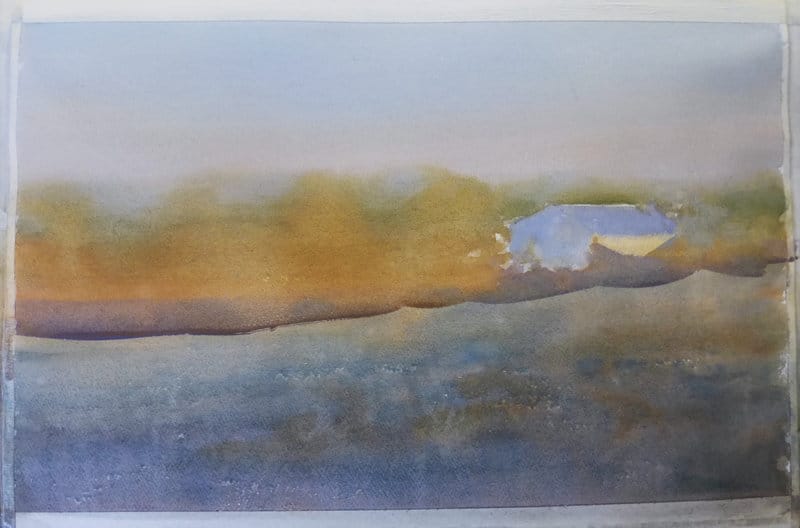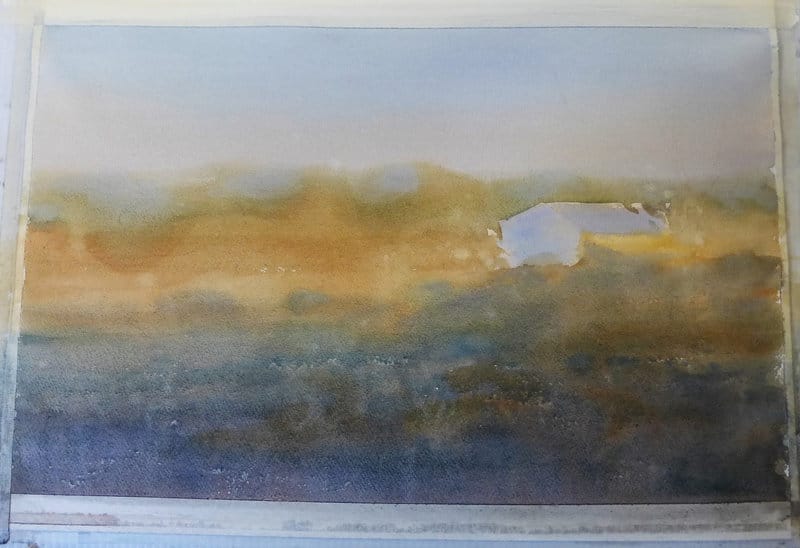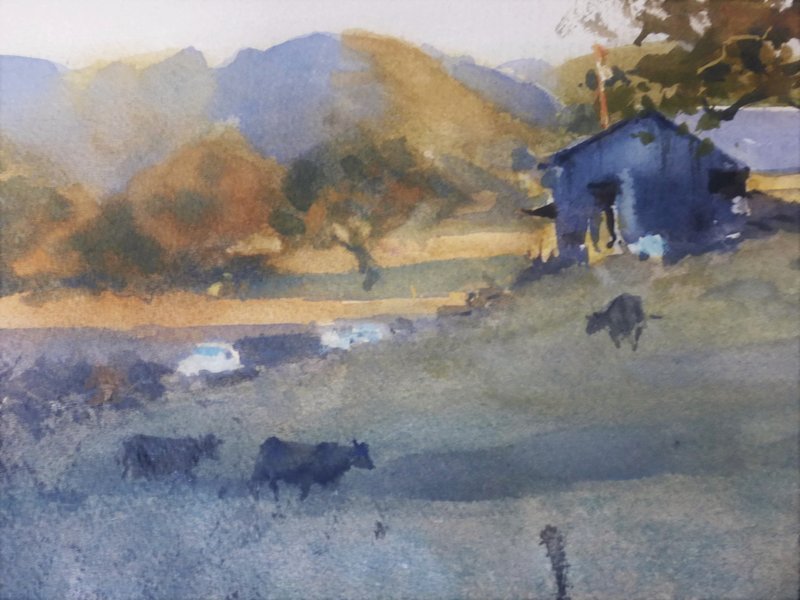Share:
Recently I added two new DANIEL SMITH colors to my palette – Burnt Sienna Light and Wisteria. I would like to show you why these two colors are important additions for me in a few step-by-step photos I took while painting this landscape, Tablas Creek Sunset.
Burnt Sienna Light is a reddish brown that’s a bit warmer and redder than Burnt Sienna, which mixes well with other pigments. The classic dark color combination would be Ultramarine Blue and Burnt Sienna, a great mix for darks, used by many painters. I am no different as it works well and has many different uses.
I also use Burnt Sienna Light like a red. Earth tones are just reds, yellows and neutrals to me. So we can think of it as a mix of blue and red that gets real dark when we use lots of pigment. That is the primary use. I also used it in the trees both distant and the close ones on the right in this painting.
Trees during sunset are really no longer green but often turn more yellow and red. So, Burnt Sienna Light is excellent for landscape painting where we deal with earth tones of all kinds, it just mixes well with other colors.

DANIEL SMITH Wisteria and Cobalt Blue on my palette
Wisteria is an interesting color. It’s pretty much a violet with lots of white in it. When mixed with Cobalt Blue and adding even more white, like Chinese White, it works well for those distant shadows in a scene like this. For me, it is very important to use lots of water, so the mix stays somewhat transparent despite the white paint. It takes practice to get it just right for my landscapes.

1. Burnt Sienna Light mix
After putting an initial light wash over the entire paper, really only finishing the sky, I start painting the back hills with the last light on them. You can see that the shadow side is purplish blue, so that’s where the Wisteria comes in. I mix it with Cobalt Blue and also a tiny bit of German Greenish Raw Umber. Rather than making a real mix, I drop the colors in on the paper while the mix is wet. Otherwise I might get too neutral, which equals mud.

2. Wisteria mix and Burnt Sienna Light mix
The problem with painting these hills is that I have to paint the light side and shadow side at the same time, going back and forth to get a somewhat soft transition. It’s a little unnerving but when it works, it’s just magic. I enjoy this sort of high risk painting.

You can practically see the Wisteria in the mix on the valley floor!

4. Finished watercolor background

5. Trees going in

6. Detail with cows
For me, all color mixes are based on primary colors, based on the fact that there are only three colors in nature. Even if we use secondaries and mix it with something else, it always comes back to primaries. In painting, it is not so important what exact color you use, but how you use it!

Tablas Creek Sunset by Frank Eber








